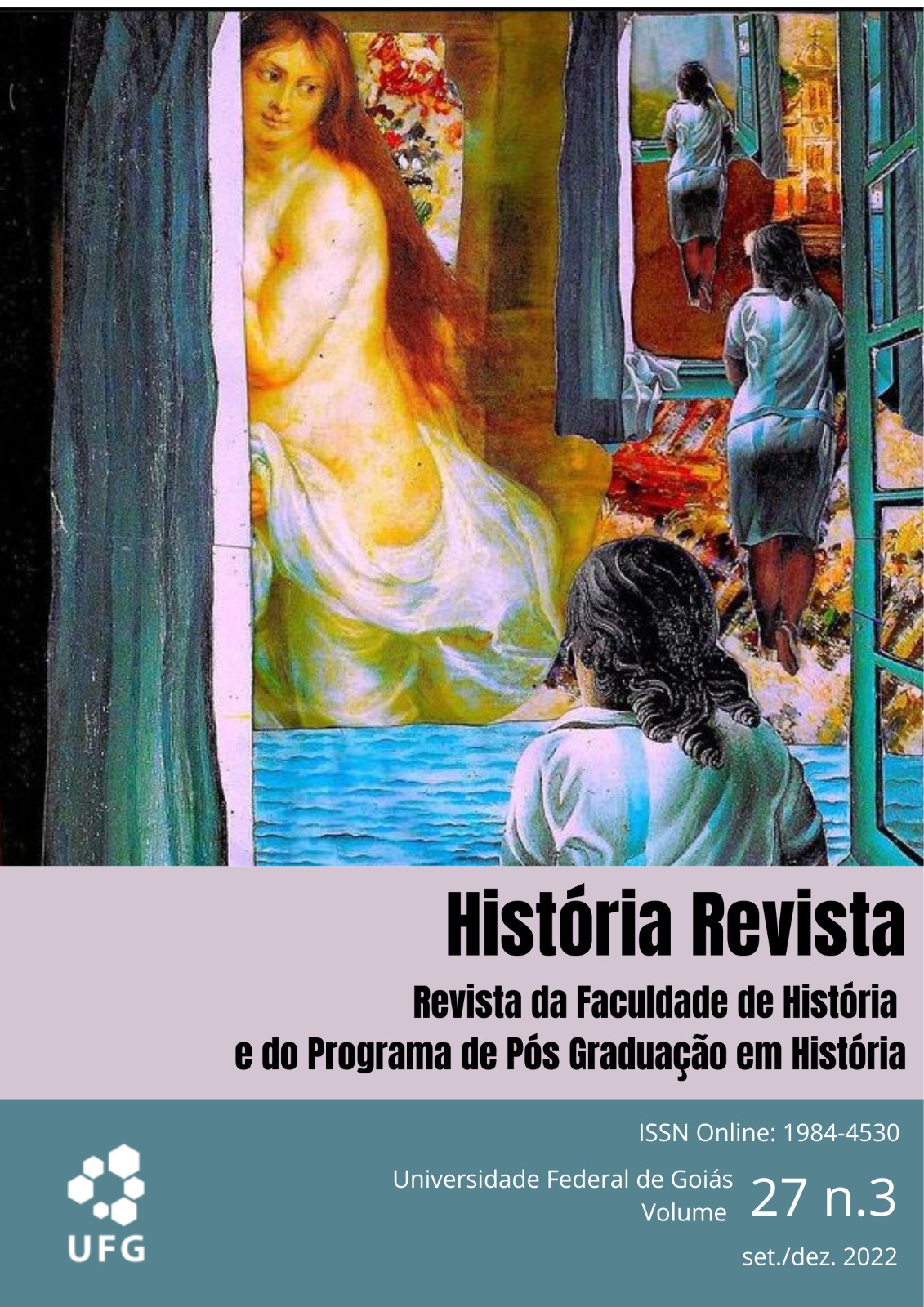Education as an Intersectional Factor in Roman Society
The “portrait” of Sempronia Gracchus
DOI:
https://doi.org/10.5216/hr.v27i3.72050Keywords:
Sempronia Graco, Intersectionality, Classical StudiesAbstract
In thinking about the approximations between history and human feelings through the perspective of gender studies, we propose an intersectional analysis of the education of Roman women in their social context, starting with the case of Sempronia Graco. An educated woman, who composed verses and aroused passions, Sempronia was portrayed by Salustio in Bellum Catilinae, as corrupt, accused of crimes of a manly audacity. Thus, by considering the factors of discrimination in the process of constructing the female image, intersectionality enables us to take a different look at women and their knowledge.
Downloads
References
Fontes
APIANO. Historia Romana II: Guerras Civiles. Libros I – II. Tradução de Antonio Sancho Royo. Madrid: Editorial Gredos, 1985.
SALÚSTIO. A Conjuração de Catilina. Tradução de Adriano Scatolin. São Paulo: Hedra, 2016.
SALLUSTIUS. Bellum Catilinae. Edited, Introduction and Commentary, by J. T. Ramsey. Oxford: Oxford University Press, 2007.
SALLUSTIUS. Bellum Catilinae. Trad. J. C. Rolfe. Cambridge: Harvard University Press, 1955.
SÊNECA, Epístolas, 95,20-1. Tradução de C. Edwards. The Politcs of Immorality in Ancient Rome, Cambridge: Cambridge University Press.
REFERÊNCIAS BIBLIOGRÁFICAS:
BARBOSA, Renata C. “Gênero, Identidade e Liberdade: A Influência da Cultura Helenística na Educação das Mulheres Romanas” In: FUNARI, P. P. A. & MARQUETTI, F. R. Autorretrato: gênero, identidade e liberdade. Londrina: Eduel, 2019, pp: 67 – 86.
BARRETT, A. A. A. Agrippina: Sex, Power, and Politics in the Early Empire. London: Routledge, 2001.
BILGE, Sirma. “Théorisations féministes de l’intersectionnalité”. Diogène, 2009, 1 (225): 70-88.
CRENSHAW, Kimberlé W. “Demarginalizing the intersection of race and sex; a black feminist critique of discrimination doctrine, feminist theory and antiracist politics”. University of Chicago Legal Forum. Chicago: 1989, pp. 139-167.
DIXON, S. Roman Mother. N Y: Routledge, 2013.
HALLETT, J. Fathers and daughters in Roman Society: women and the elite Family. Princeton University Press: Princeton, 1984.
HEMELRIJK, Emily A. Matrona Docta: Educated women in the Roman élite from Cornelia to Julia Domna. London and New York: Routledge, 1999.
HILLARD, T. “On the stage, behind the curtain: images of politically active women in the late Roman republic”. In GARLICK, B. DIXON, S. ALLEN, P. (eds) Stereotypes of Women in Power: Historical perspectives and Revisionist Views. New York: Greenwood Press, 1992, pp: 37-63.
JOSHEL, Sandra R., MURNAGHAN, Sheila. Women And Slaves In Greco-Roman Culture: Differential Equations, N. Y: Routledge, 1998.
PEREIRA, M. H.R. Estudos de História da Cultura Clássica II. Lisboa: Fundação Calouste Gulbenkian, 1989.
RIOSA, F. & SOTEROB, E. “Gênero em perspectiva interseccional”. PLURAL, Revista do Programa de Pós-graduação em Sociologia da USP, 2019, 26 (1), 1–10.
SMITH, W. Dictionary of Greek and Roman Biography and Mythology. Vol. III. London: Oarses-Zygia, 1890.
TAKACS, Sarolta A. Vestal Virgins, Sibyls, And Matrons: Women in Roman Religion. Austin: University of Texas Press, 2008.
VEYNE, Paul. A Elegia Erótica Romana. O amor, a poesia e o ocidente. São Paulo: Brasiliense, 1995.
Downloads
Published
How to Cite
Issue
Section
License
Declaração de Direito Autoral
Concedo à História Revista o direito de primeira publicação da versão revisada do meu artigo, licenciado sob a Licença Creative Commons Attribution, que permite o compartilhamento do trabalho com reconhecimento da autoria e publicação inicial nesta revista.
Afirmo ainda que meu artigo não está sendo submetido a outra publicação e não foi publicado na íntegra em outro periódico, assumindo total responsabilidade por sua originalidade, podendo incidir sobre mim eventuais encargos decorrentes de reivindicação, por parte de terceiros, em relação à autoria do mesmo.



